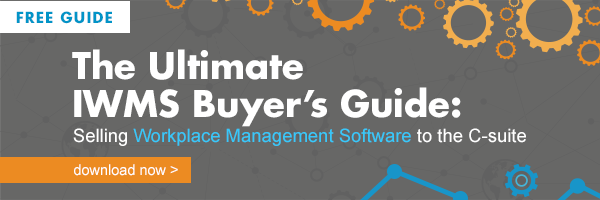How to Adopt Mindfulness at Work


It’s nearing the end of the workday, and you’ve only tackled a small portion of the items on your to-do list. Once more, your schedule has been overbooked with internal meetings and client calls. Your desktop is covered in reports, your inbox is overflowing and the chiming of your phone is incessant. Each time you attempt to tackle a task, your mind wanders to tomorrow’s expectations and next month’s goals. You’re tense, you’re stressed and, in these moments, your passion for your work—and your productivity—dwindles.
If this sounds familiar, you’re not alone. According to the APA, more than one-third of working Americans reported experiencing chronic work-related stress. And chronic stress can contribute to high blood pressure, heart attack and stroke. It can have dangerous consequences for your physical, mental and emotional well-being.
Many of the stressors we face are unavoidable. However, we can begin healing by changing the way we react to stressful situations. Today, we’re discussing what mindfulness at work means, and how you can implement the practice into your everyday routine.
 What is Mindfulness?
What is Mindfulness?
Many people are quick to associate mindfulness with a New Age lifestyle—lots of bikram yoga, incense and meditation to whale sounds. But this practice is so much more. In fact, mindfulness is often recommended by psychiatrists and psychologists as therapy for stress, anxiety and depression—and a way to improve mental clarity.
At its core, mindfulness is the state of being conscious, aware and focused on the present moment. While rooted in Buddhism, mindfulness has transcended religion and evolved into a secular practice anyone, anywhere can use. From Google to Target, some of the most well-known brands in the country use mindfulness in their corporate training.
Think about the last time you were stressed. Chances are, the majority of your toxic or stressful feelings happen when you rehash past mistakes or worry about the future. If you train your mind to focus on the moment, you’re more likely to avoid those unhelpful, distressing emotions.
Now that you know what mindfulness is, let’s look at some ways you can practice mindfulness at work.
Strive for Acceptance
One of the goals of mindfulness is to reach a place of acceptance—acknowledging your situation as it is. For example, you may feel upset that some of your employees have become unhappy or complacent. So you may choose to accept that, as the leader of your business, you are responsible for keeping employees satisfied and engaged. But don’t get discouraged if you’re unable to reach acceptance immediately. It’s a process.
“First, through mindfulness, you increase your awareness of these judgmental thoughts and the resulting emotions,” says mental health therapist Sheri Van Dijk, MSW. “Then you work on bringing acceptance to your experience—accepting the thoughts as just thoughts; accepting the emotions they trigger; and gradually, accepting yourself as you are.”
Embrace Meditation
Perhaps one of the most important exercises for achieving mindfulness is meditation. This doesn’t necessarily mean you need to sit cross-legged on the floor and chant “om.” (Unless this helps you—in which case, go for it!)
Meditation simply means to think deeply and focus your mind. There are many methods of meditating, but it’s best to find a quiet space free of distractions. If you’re meditating in the midst of a busy office, pop in your earbuds and find a guided meditation podcast or video. Even five minutes of meditation can transform your day.
Once you’ve completed your meditation, you’ll return to your task mentally sharp and refreshed.
Focus on Breathing
As the stressors of your job grow, you likely find yourself becoming irritable and frustrated. Unfortunately, this can have a snowball effect. The more stressed you become, the more additional stressors will affect you. However, as a business leader, it’s up to you to exhibit how to handle on-the-job challenges.
Try this: The next time you feel the stress boiling up, step back and focus on your breathing. Count the seconds of your inhale, then count the seconds of your exhale. Work to make the length of your exhale twice as long as your inhale. This simple act will slow your heart rate and help you become calm. Once you’ve returned to a place of mental clarity, you’ll be able to focus on the present and let go of future concerns.
 Schedule Time to Practice Mindfulness
Schedule Time to Practice Mindfulness
“You should sit in meditation for 20 minutes every day—unless you’re too busy; then you should sit for an hour.” —Zen proverb
The busier we are, the less we allow ourselves the things we enjoy. How many times have you put off doing something you love because you wanted to finish your work first? The hard truth is that you’ll never be “done” with work—at least not until you retire. There will always be another project on the horizon and another to-do on the list.
Instead of seeing relaxation as a reward, incorporate it into your daily routine. Schedule at least 20 minutes each day for mindfulness, no matter what is happening. Find a quiet place where you can be alone to practice focusing on the present. As your thoughts begin to drift to the past or future, pull yourself back into the moment.
Encourage the rest of your team to schedule in their own “brain breaks” and make mindfulness a part of your company culture.
Seek Opportunities to Do Less
In our culture, we’re always told we should be doing more. As a business leader, you know climbing the professional ladder seems to require constantly going the extra mile and, often, spreading yourself thinner than you’d like.
We’re not accustomed to saying “no.” But modern technology allows us the opportunity to do less without affecting the quality of our work. Communication tools, such as real-time project management applications, and integrated workplace management systems help us automate processes so we can focus on the more human-related aspects of our jobs.
By taking at least a small portion off your plate, you can be present, achieve a more mindful work day and establish a better work-life balance.
Next Steps
When you lead a busy life filled to the brim with obligations and expectations (as most of us do), it’s easy to stray from the present moment. We’re all guilty of stressing over the two things we have the least amount of control over: the past and the future. By using the above tips, you can bring yourself back to what’s happening now and achieve mindfulness at work.
Looking to make your workplace more collaborative and innovative? IWMS can help. Check out our infographic: The Top 16 Things to Think About for 2016.
